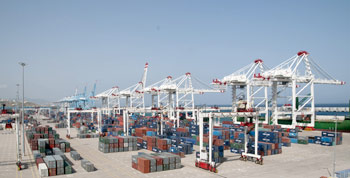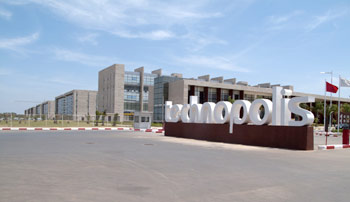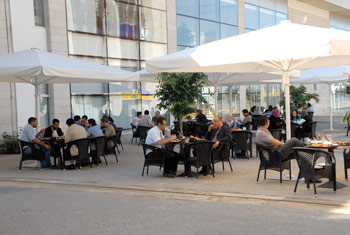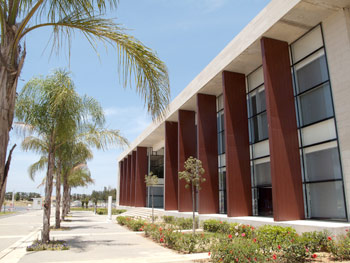Morocco Economic Growth and Free Trade Agreements
President of CGEM (Confédération Générale des Entreprises du Maroc), Mohamed Horani
The most significant achievement was noted during the financial crisis of 2008-2009, as Morocco managed to achieve a growth rate of more than 5%
Interview with Mohamed Horani, President of CGEM (Confédération Générale des Entreprises du Maroc)

According to the Ministry of Economy and Finance, a growth rate of 5% is predicted which is an increase of one point compared to the year 2010. This leads to a budget deficit of 3.25% this year. What is your opinion on the current economic state of the big companies in Morocco?
I believe that during the last decade, the performance of the Moroccan economy was much improved compared to 2 decades ago. In fact, the average growth rate during the last decade was 4.8% versus the 3.8% average growth during the nineties . An increase of 1%.
The most significant achievement was noted during the financial crisis of 2008-2009, as Morocco managed to achieve a growth rate of more than 5%, while all the other economic indicators were stable. The rate of inflation, the level of budget deficit, and the level of international debt were all under control. While we note that the economic performance this decade was satisfactory, our plan for the next decade is to accelerate economic growth. 
Our intention is to publish a study which defines the Confederation’s Vision for 2020 and which fits in with the various strategies presented by the Moroccan government for a number of economic sectors . Our ambition is to increase economic growth to an average annual rate of 6 to 7%. This is a necessary target to enable Morocco to create at least 2.5 million jobs by 2020 while keeping unemployment at the present level of 9%.
Compared to double digit unemployment figures that Morocco experienced in the past, this rate is not too high. But we need to take into consideration the increasing number of young women and men coming into the labor market and in order to reduce the unemployment rate to7 to 8%, we need to be able to create 3 million jobs by 2020. We believe this target to be within our reach and we have made concrete recommendations towards it.
“
The most significant achievement was noted during the financial crisis of 2008-2009, as Morocco managed to achieve a growth rate of more than 5%.
“
How do What are the main recommendations for Morocco?
Cooperation between the Private sector and the government is well established and there is constant consultation on major economic decisions. All the government strategies for various sectors as they exist today have been set up in collaboration with our confederation as the representative of the private sector. We are not only involved in the design of different sector strategies but also in their implementation.
What we propose is to improve the implementation phase of the strategies at the national level and the adaptation of the plans at the regional level. This is to be conducted in accordance with the advanced regionalization plan initiated by His Majesty the King a year ago.
We expressed our opinion on this plan and proposed that the determination of the regions be entirely based on economic criteria. We have also recommended that each region should evolve around a major city which will be its economic pole and play an important economic role for regional development .
Today, we have 16 economic regions which, in our opinion, are too many. So we will need to reduce this number of regions and try to construct regions that are economically sound. In that way, an important degree of solidarity in the whole of the kingdom can be guaranteed.
We are trying our best to promote free trade with our neighbor countries. We would like the Maghreb to be perceived as business entity to facilitate our proceeding.
We have also suggested a number of new business opportunity sectors to be developed in Morocco despite the fact that their impact will be limited during the decade 2011-2020.
What other countries have you strong ties with?
We have created the Confederation of the Maghreb Employers 3 years ago. The Maghreb Union of Entrepreneurs groups together the 5 employers’ confederations of the 5 Maghreb countries: Mauritania, Morocco, Algeria, Tunisia and Libya.
Other partners include Europe. We consider our relation with Europe to be more of a responsibility than an advantage. We believe in regional integration, if we want our country to hold a position in the new global configuration, we need to reinforce our region, the Maghreb, as well as that of the Mediterranean basin with southern Europe. We are convinced that the fate of Morocco is linked to that of the whole region.
What are the macroeconomic fundamentals to attract investment in Morocco?
Strategically, the choice of Morocco can be summarized in 2 points: a production platform, and an export platform. Creating a production platform is supported by the development strategies facilitating and promoting production in Morocco.
Creating an export platform is to take advantage of the free trade agreements enjoyed by Morocco with Europe, the USA and the four Arab partners of the Agadir Agreement. Another free trade partner is Turkey. More free trade agreements being finalized with West Africa, Central Africa and Canada.
Therefore, we would like to build on these two platforms, production and exports. The other assets of Morocco are its geographical situation, its political stability, and its qualified human resources. They are the backbone of our planned strategies.
In addition, Morocco is a continuous building site with the numerous large infrastructure projects being implemented in Morocco such as motorways, railways, ports and airports as well as integrated industrial platforms and large housing projects which are being built to improve the life of the citizens.
What do you think can be done to accelerate or improve exports of goods from Morocco?
While the balance of payments is stable, the problem is our trade deficit and more specifically in the exchanges of goods. Increasing exports is one of the main targets set up in our strategy ” Vision 2020″, In fact our plan relies heavily on our performance in improving exports. So we suggest the following:
1) Rationalizing imports and
2) reinforcing and developing the exports of goods and services.
We are working to strengthen small businesses (SME’s), trying to enable them to achieve a critical size which in turn will enable them to improve their competitiveness. They need support to build strategic development, to improve their management of human resources, and to have efficient marketing . This will help them to position themselves in the global configuration.